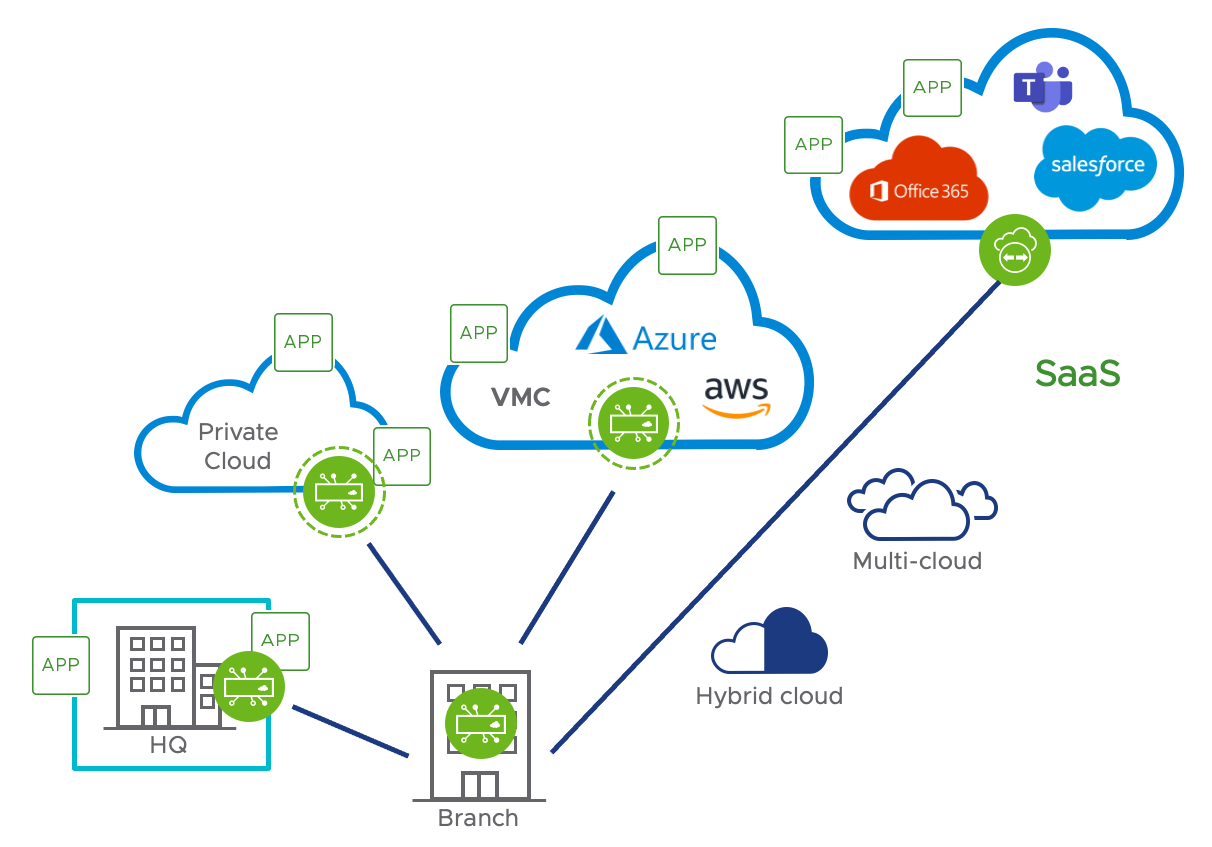Our applications live everywhere. Our employees want to work from anywhere. Now more than ever, our customers expect to connect instantly, with high network performance.
In a previous blog, “Foundations for a Successful Digital Transformation: Connectivity,” we discussed ways a company can meet today’s expectations for always-on connectivity. Digital transformation requires Connectivity as a main foundation.
Since our customers are more mobile than ever, let’s look at another digital transformation must-have: Cloud services for compute and storage. Forward-thinking organizations embracing a digital transformation are moving enterprise applications and workloads to the Cloud: public, private, hybrid and multi-Cloud.
In the past, the data center was located in the customer’s building, typically an air-conditioned on-site server room, along with storage, compute, and network components. A few feet away, a cable connected storage devices to the server and on to the network.
In today’s world, compute can be hundreds, if not thousands, of miles away in a Cloud. Storage is the same, and may be hosted in a different Cloud, with a different provider. Essentially, the compute, storage and networking that makes applications work and once lived in the data center now is exported to different locations around the country and around the world.
What is Cloud? Where is it located? Does it matter?
The concept of the Cloud raises important questions for IT professionals: Do you know where your data is? And, do you care?
For many organizations, the answer is “no” and “yes.”
Latency is now a major concern because delay in accessing applications can be considerable if they are too far away. This leads to poor application response time and end-user dissatisfaction. Clearly, enterprise data managers need to manage and control for latency, even while continuing the migration process.
Assessment: What to look for in Cloud services
Here’s an overview of essential questions to ask and points to consider, ensuring a successful digital transformation that embraces the full benefits of the Cloud.
Where are the applications?
Who’s using them? What’s the best Cloud platform (public, private, hybrid) to host them? Is bandwidth adequate? Is there ongoing traffic monitoring and utilization analysis?
It’s true that most large enterprises are migrating applications to the Cloud. Yet there must still be a balance between the cost-efficiency of using public cloud services like AWS (Amazon Web Services), Microsoft Azure, Google Cloud and others versus the control and performance of private data centers. There’s a need for a hybrid approach as well. Move workloads to the Cloud where you can, and use private facilities (co-location) where you must.
Is there a direct Cloud connection?
Can transit gateways, the network transit hub that interconnects virtual private Clouds (VPCs) and on-premise networks be easily accessed? Is there Cloud on-ramp within a data center for direct connectivity to a Cloud provider available?
To ensure the highest performing connections, redundant access and high-availability configurations with direct fiber, access to Cloud providers may be required.
Can SD-WAN aid digital transformation?
Is connecting directly to the Cloud from wherever you are an option? Would a Cloud gateway network with a 99.99% SLA boost network performance?
SD-WAN, or Software-Defined Wide Area Network, allows companies to efficiently manage their wide area network —from branch offices to data centers and the Cloud. It enables agility, speed to market and it’s easy to use and reconfigure. For example, if you need bandwidth in certain locations in your network, you can move bandwidth around, turn it on and turn it off as required
Today, everyone uses the Internet. While the Internet’s good for some tasks, it’s not as secure, or fast and could be expensive, depending on how you use it. Connecting directly to the Cloud is definitely something to consider as you’re undergoing your digital transformation.
For more Cloud information, check out Great Plains Communications resources:
Cloud and Connectivity: Trends to Watch and Disconnects to Avoid
Choosing the Right Path to the Cloud — We highlight some of the advantages of private direct connections to the Cloud versus the public Internet.
Our roundtable: Cloud Connects in the Midwest.


